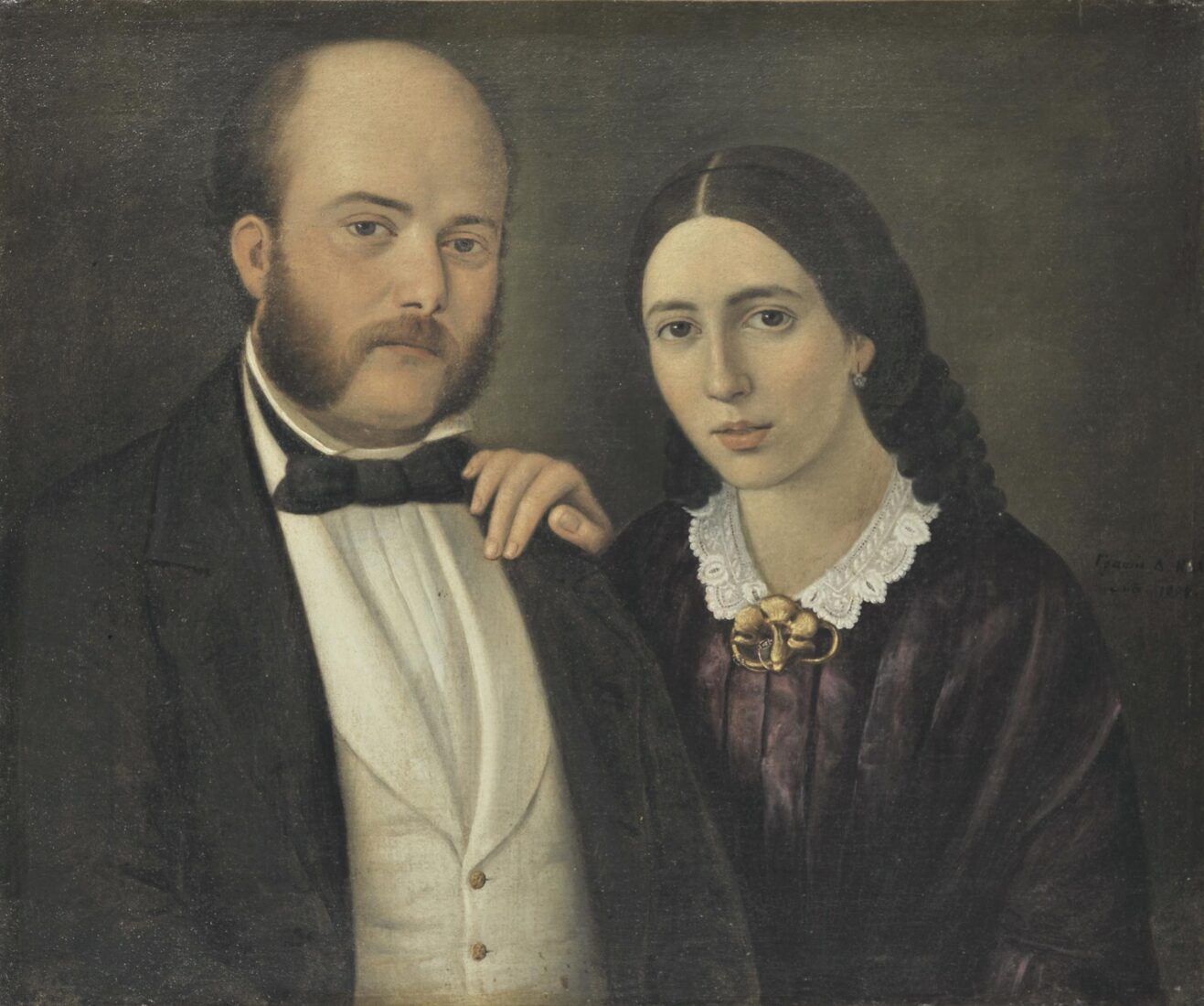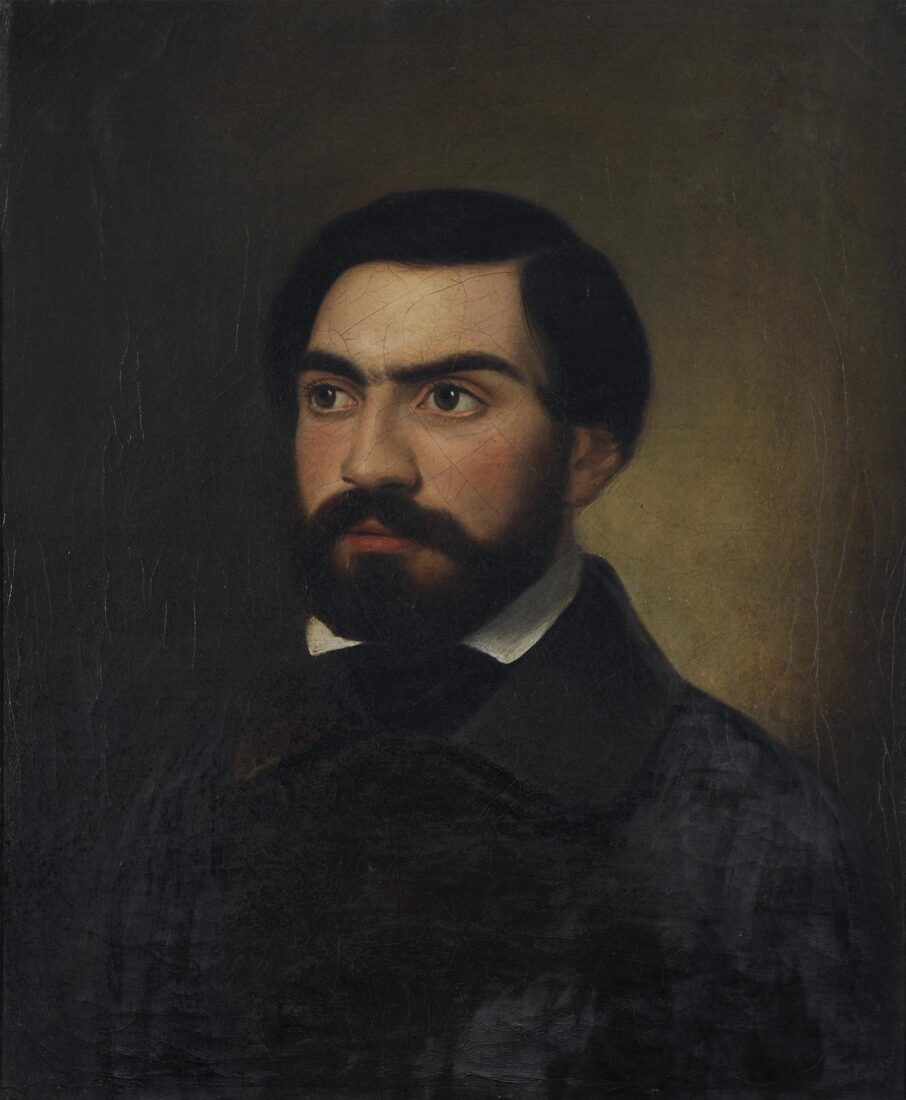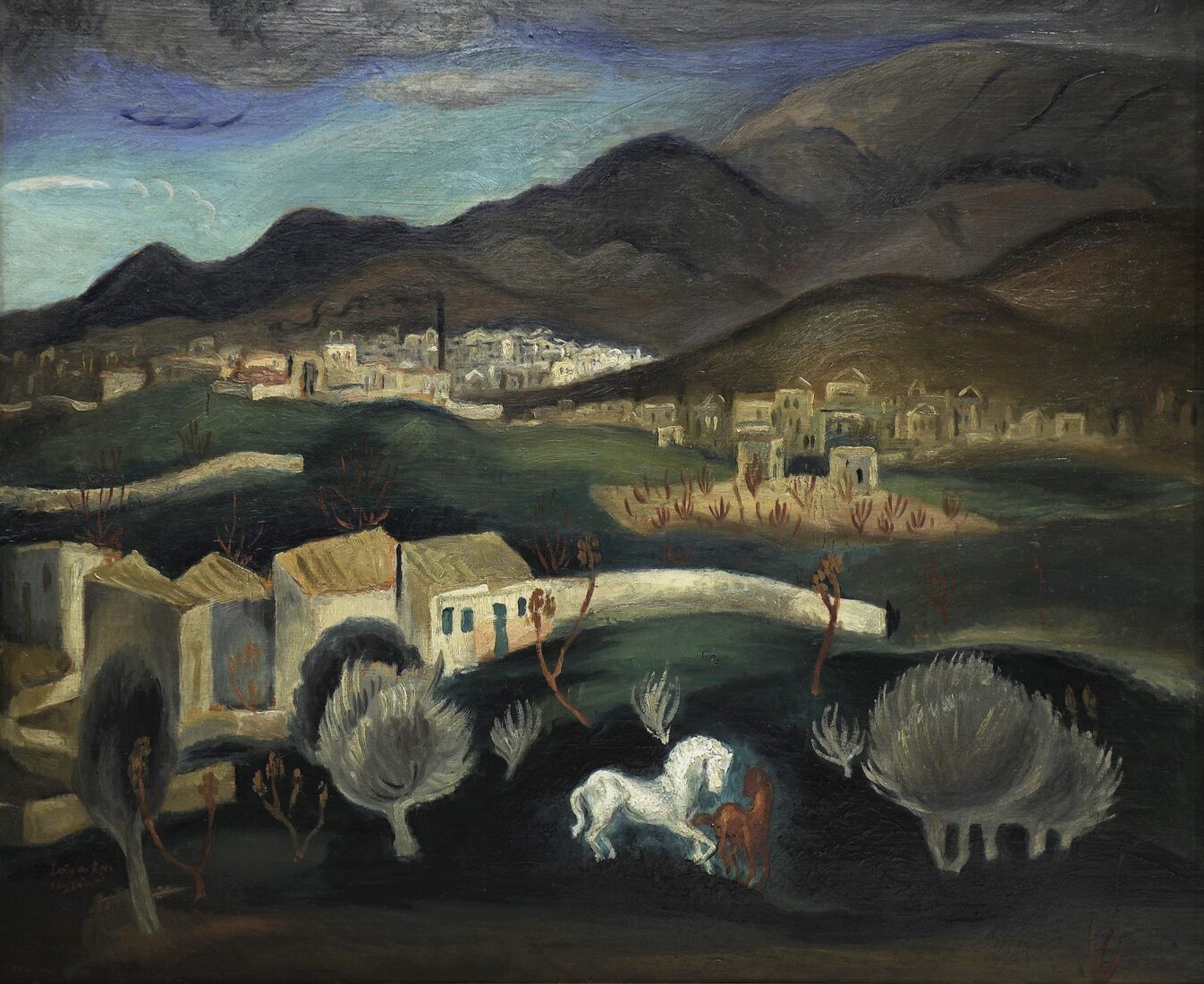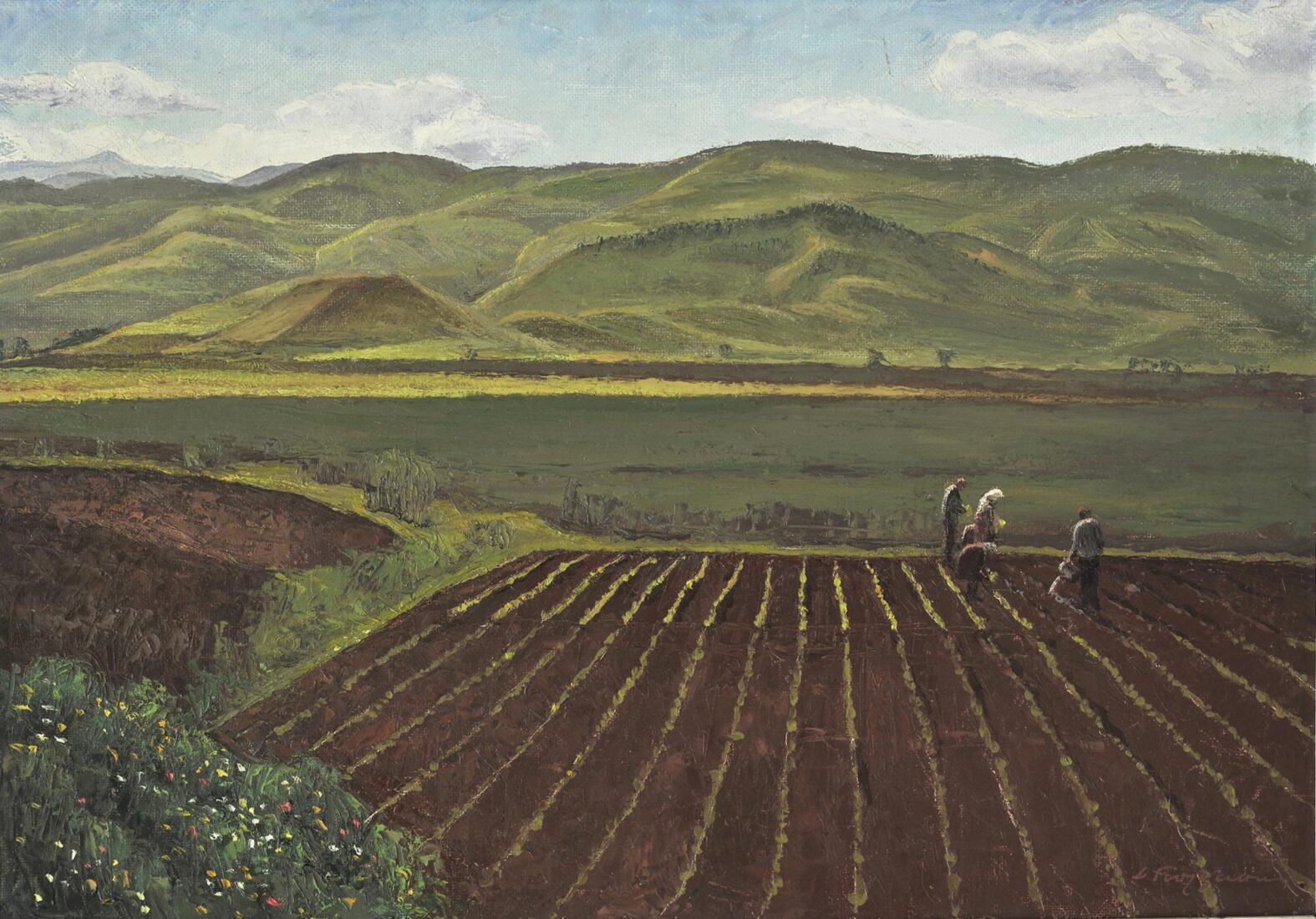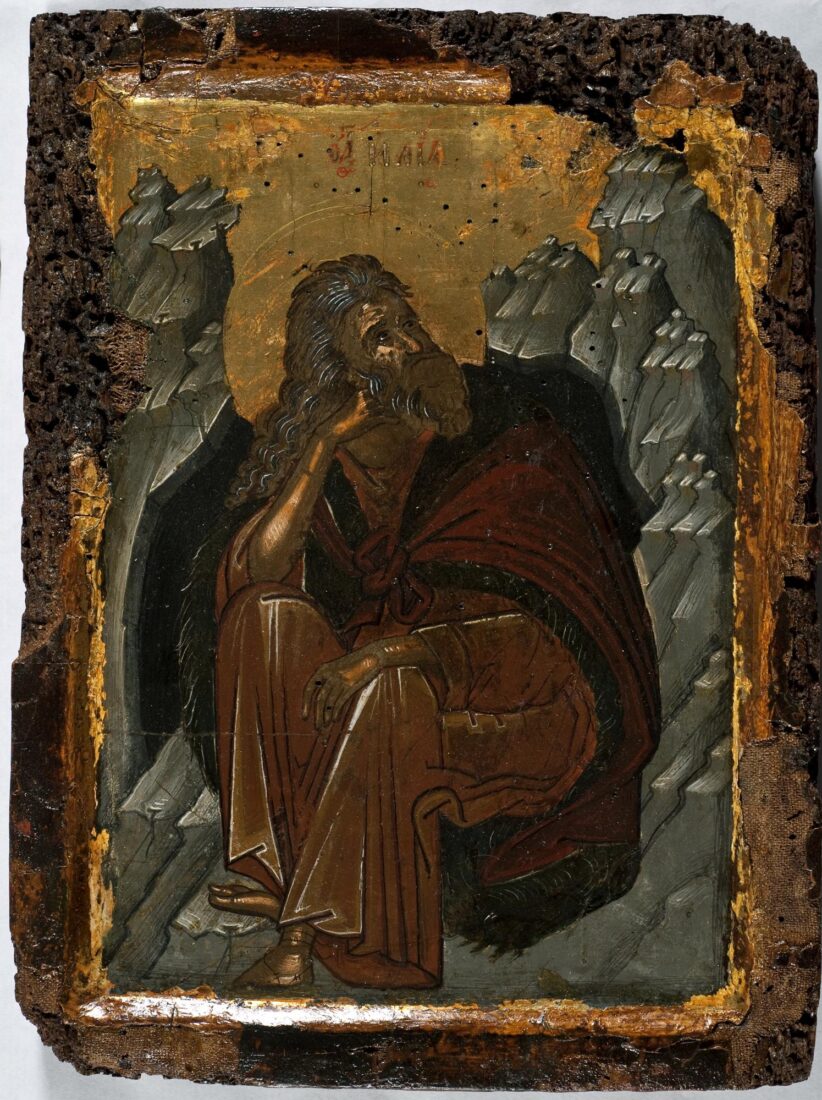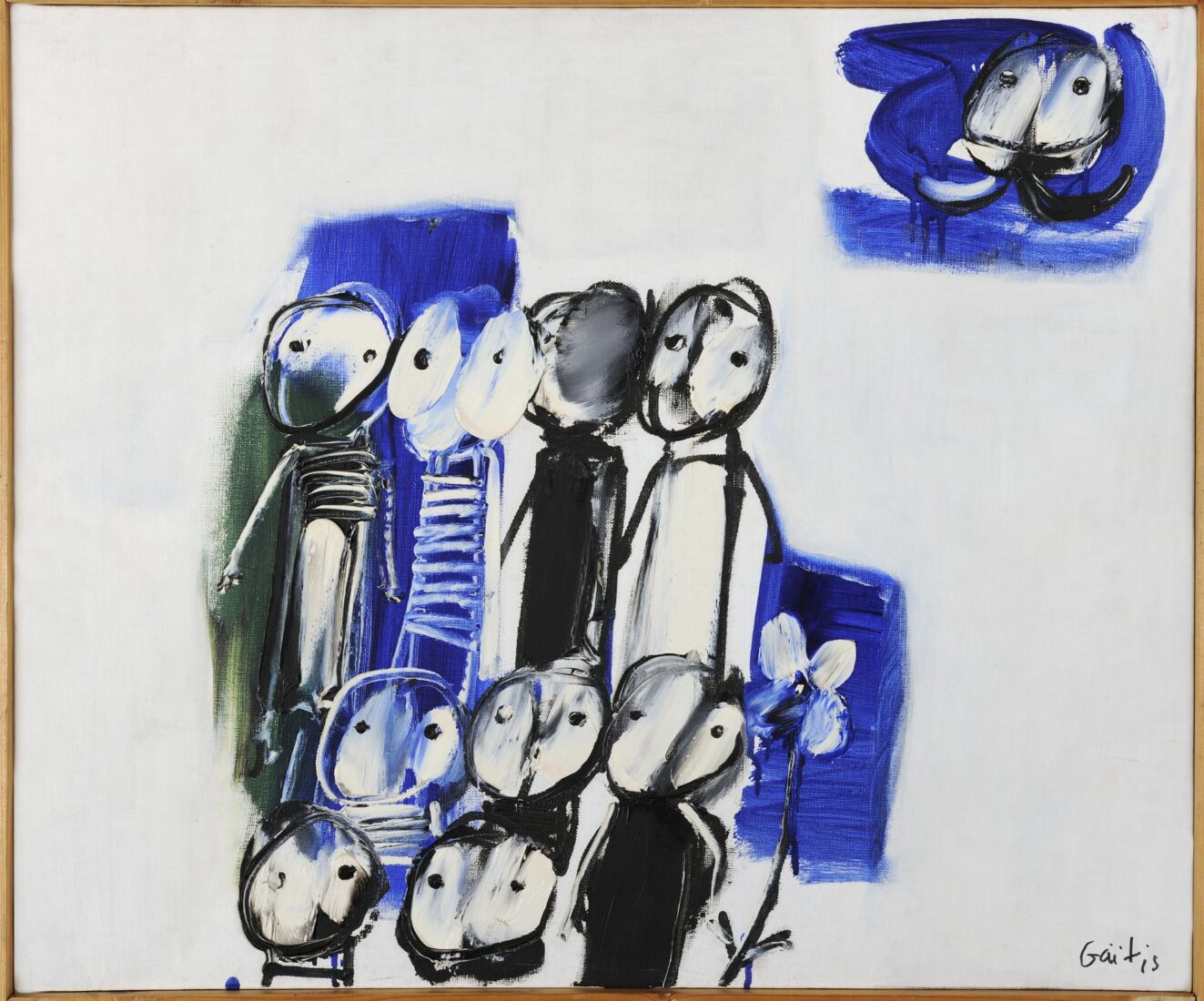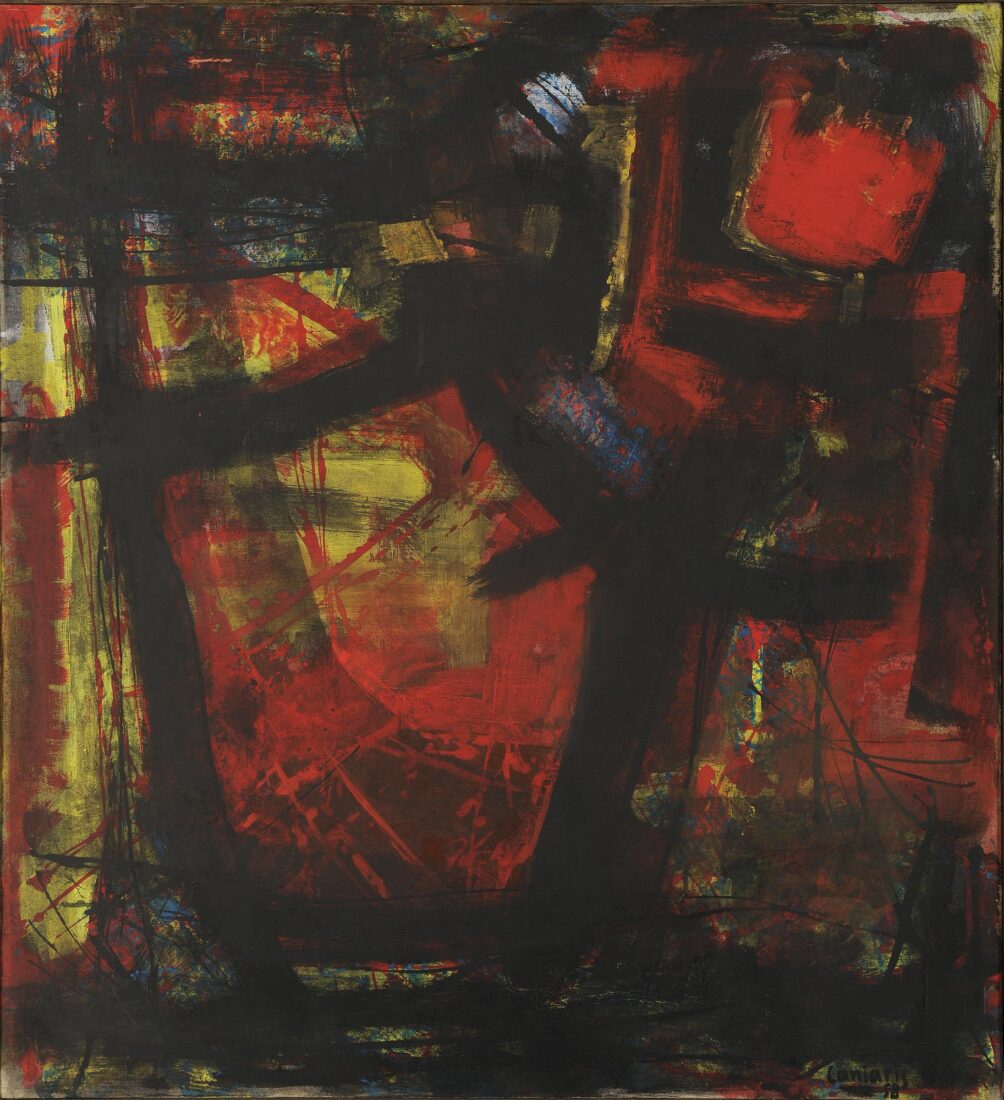

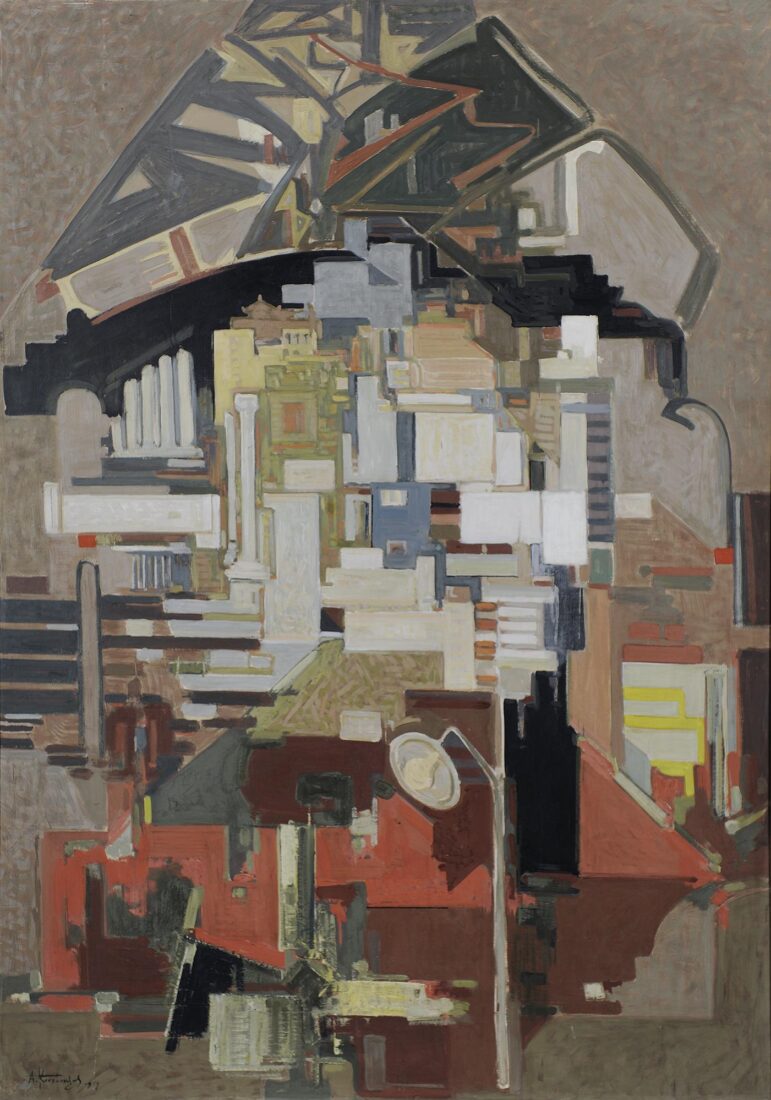
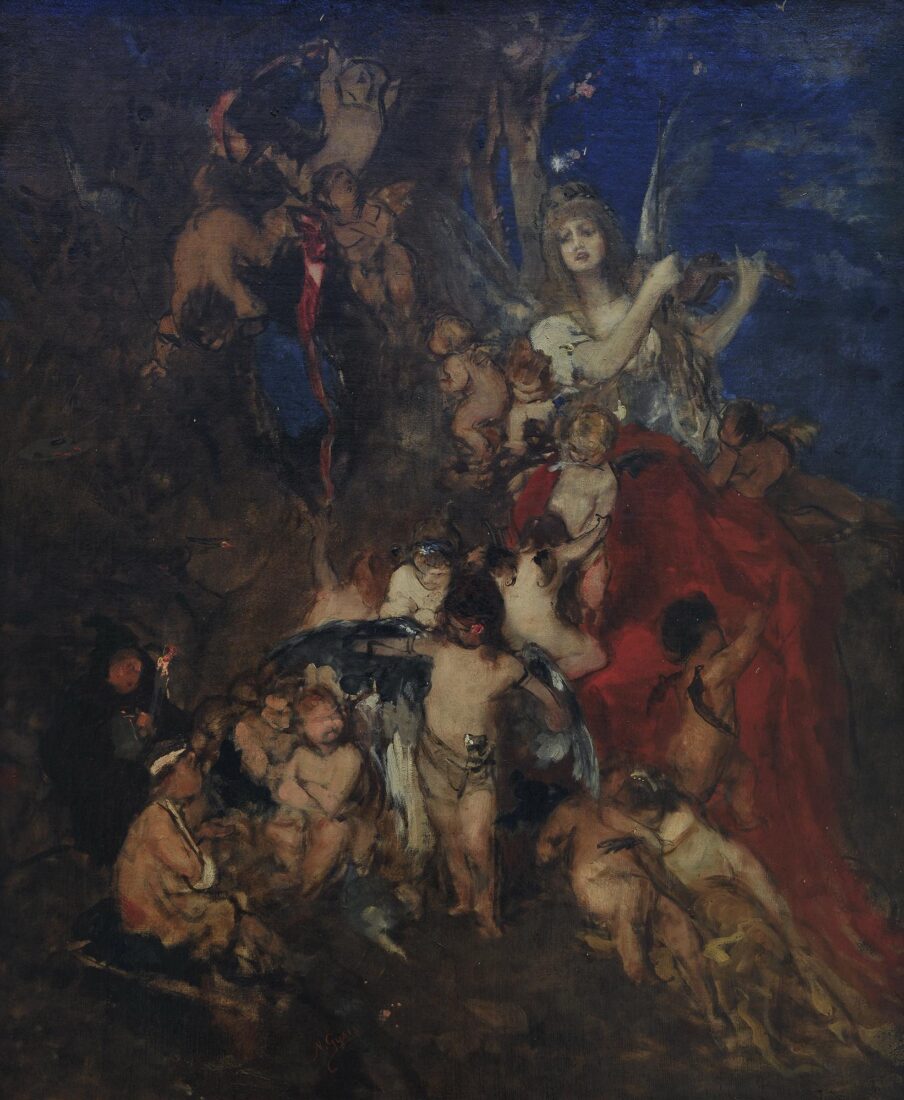
One of Gyzis’ earliest paintings of a symbolic nature. The main figure in “Art and its Spirits” is that of a beautiful winged girl, an angel playing the violin. The reason is perhaps that Gyzis considered music as a superior form of art. The other arts are embodied by the little Erotes (putti), surrounding her like a swarm of bees, playing with the tools of various arts. The purple skirt of the main figure, pouring down like a river, dominates the composition. Upon closer look, the composition appears to be organized on the diagonal defined by the movement of the little angels and two arches, one on the top right corner and the other on the bottom of the composition. Part of the Baroque formal vocabulary, the diagonal arrangement adds great dynamism to the composition. Warm brown-red tones prevail along with black and white colours.
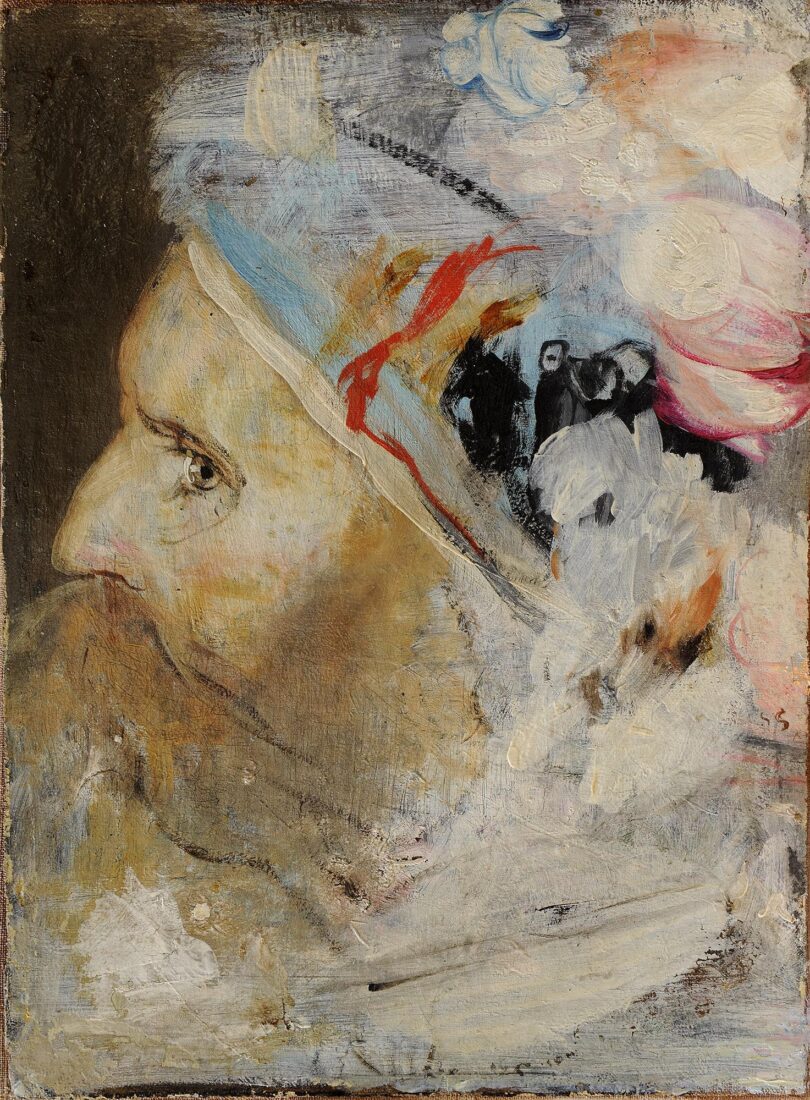
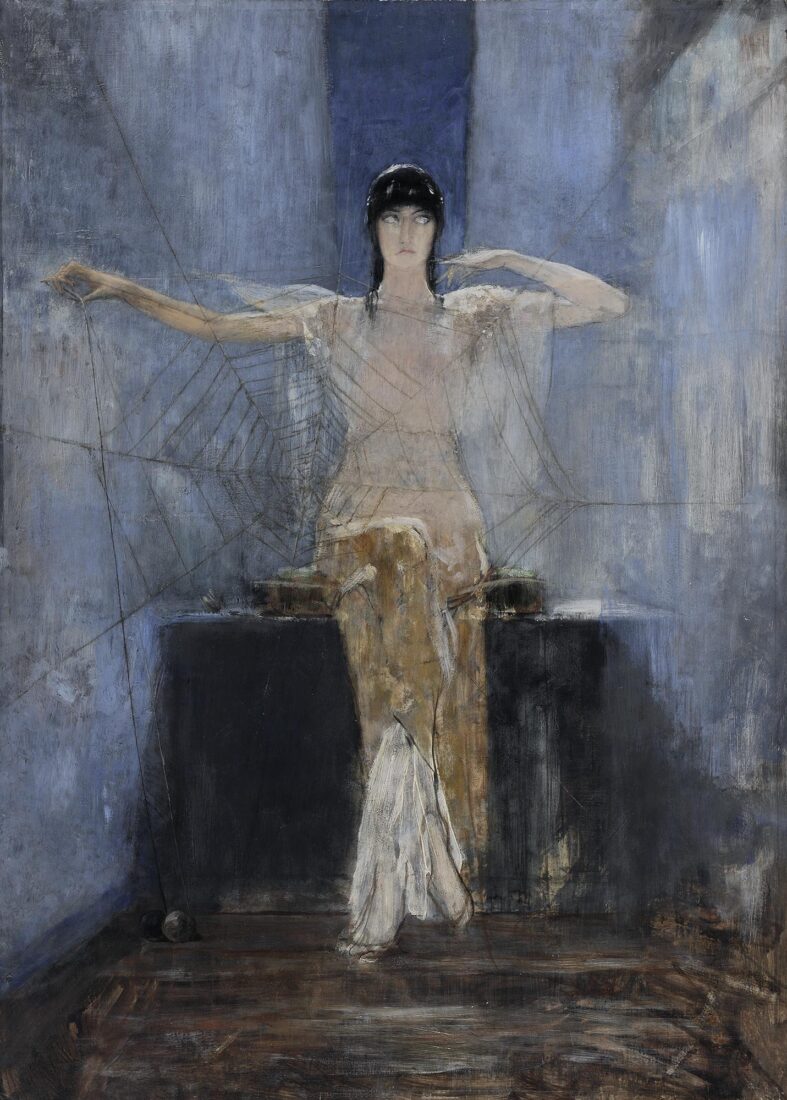
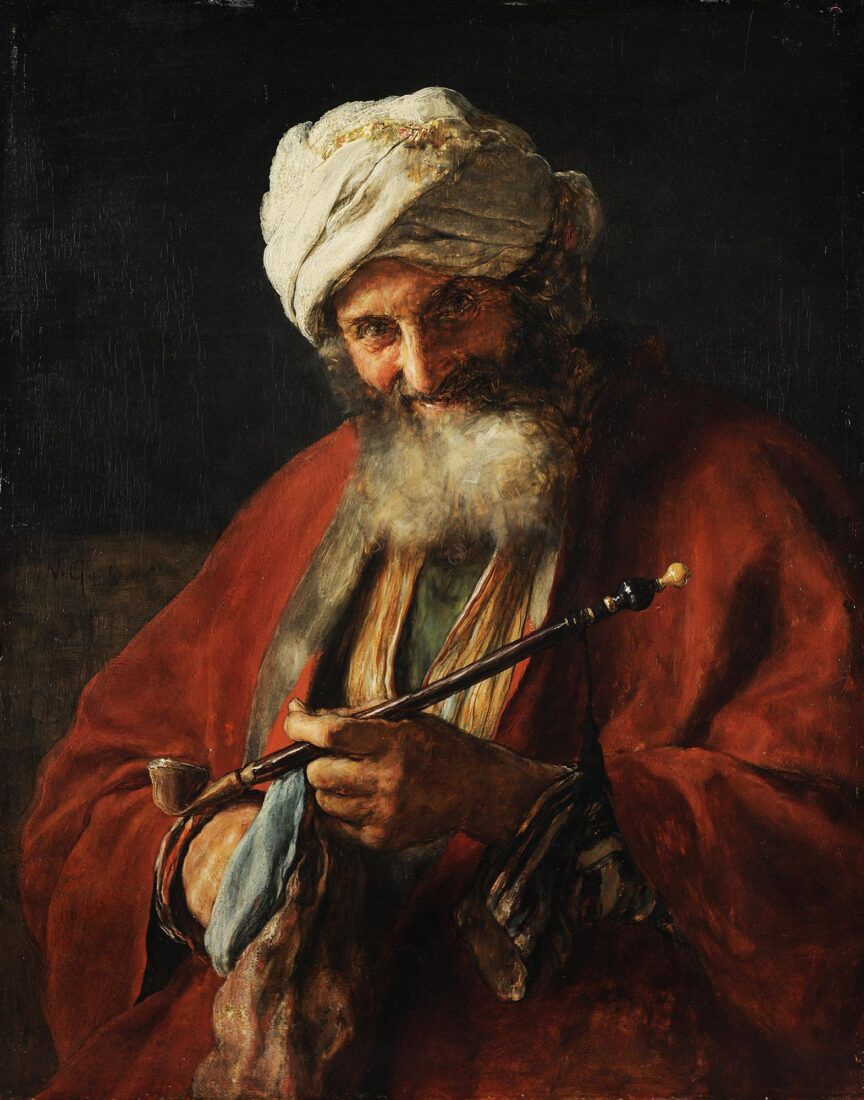
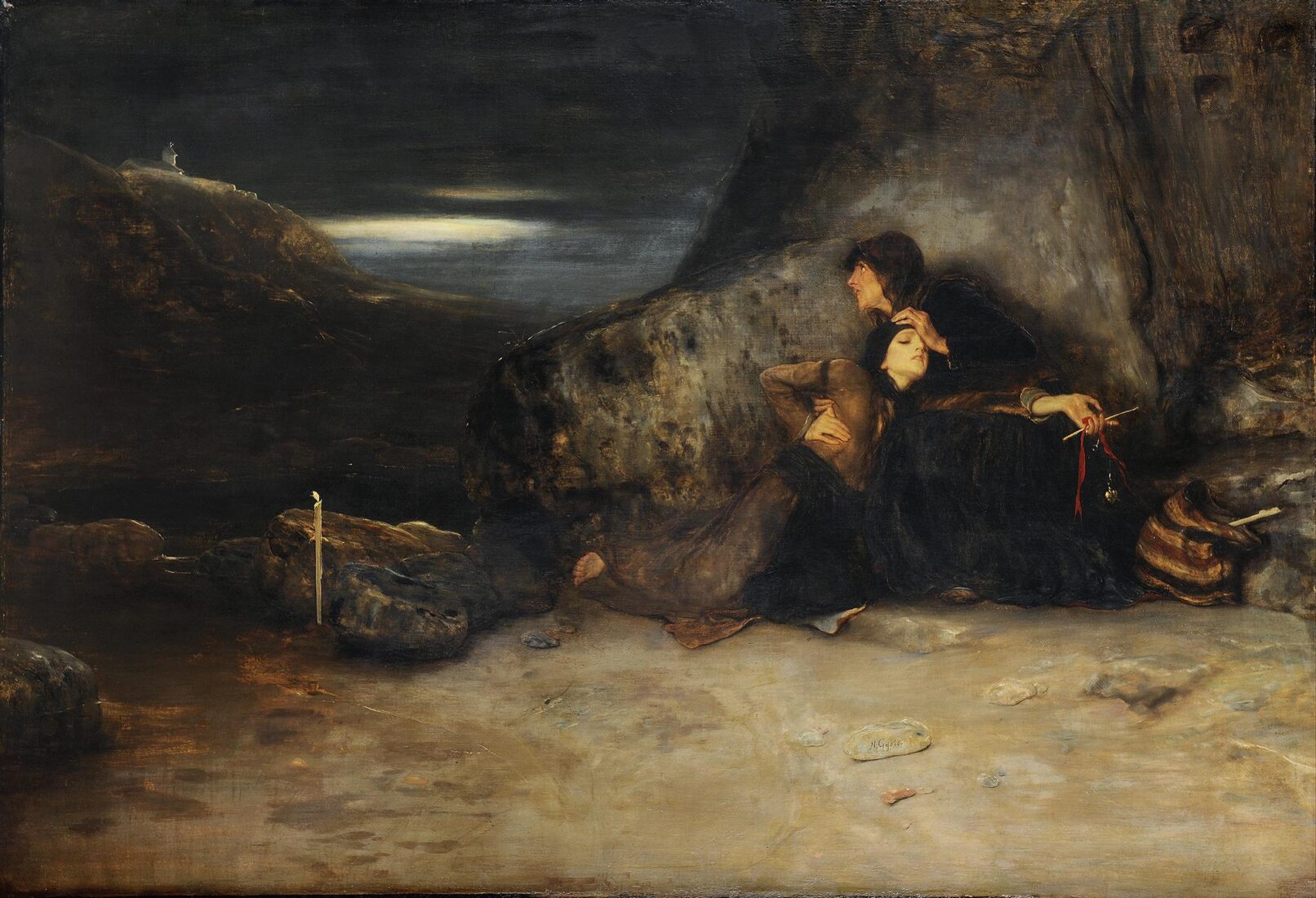
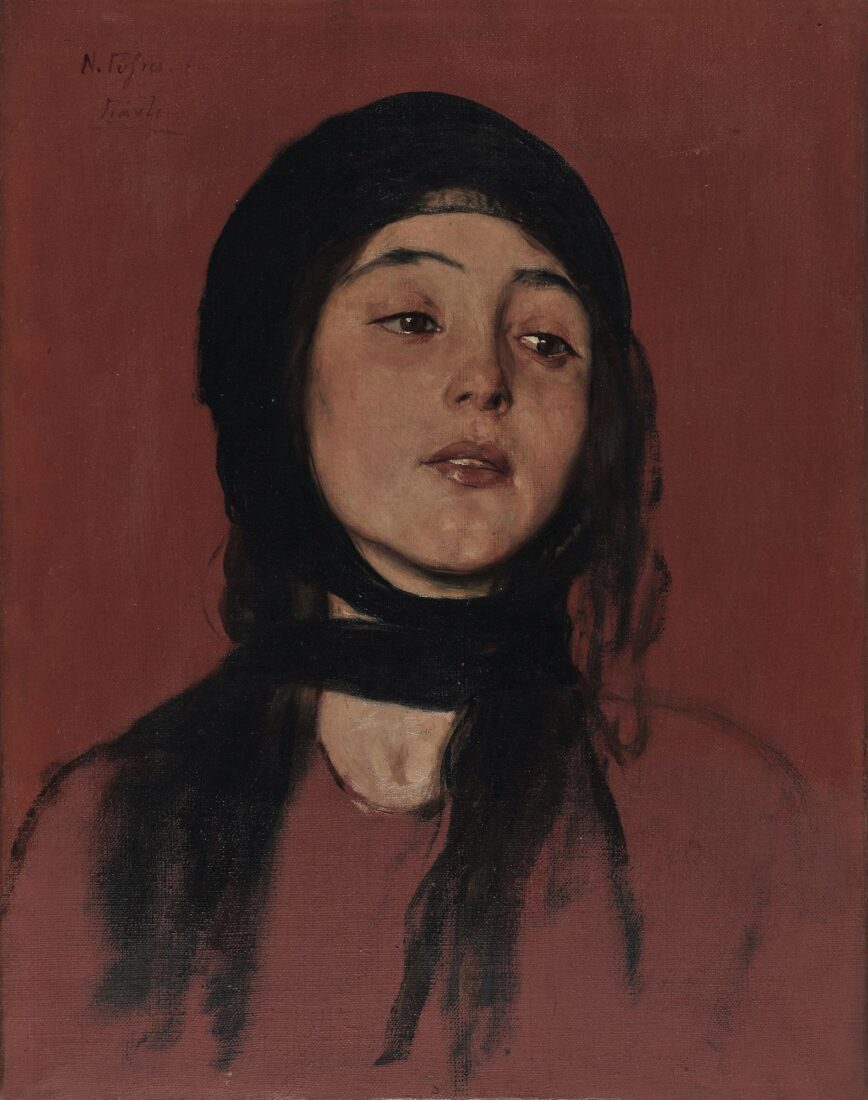
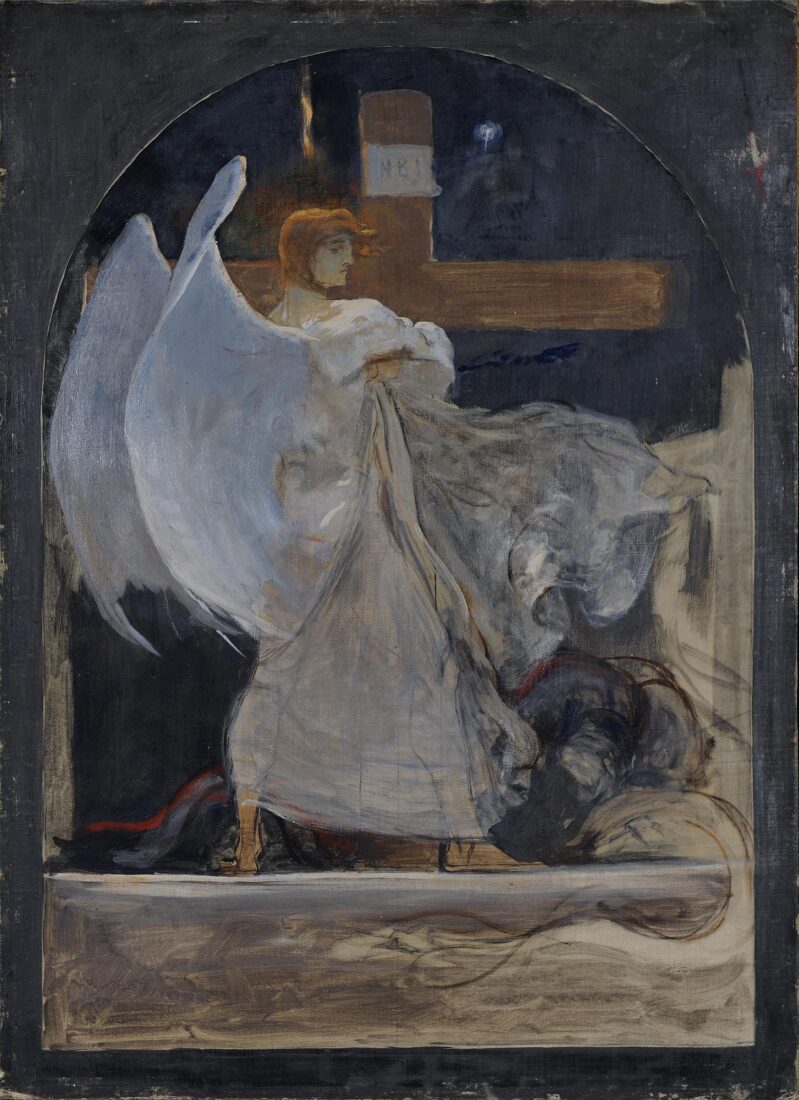
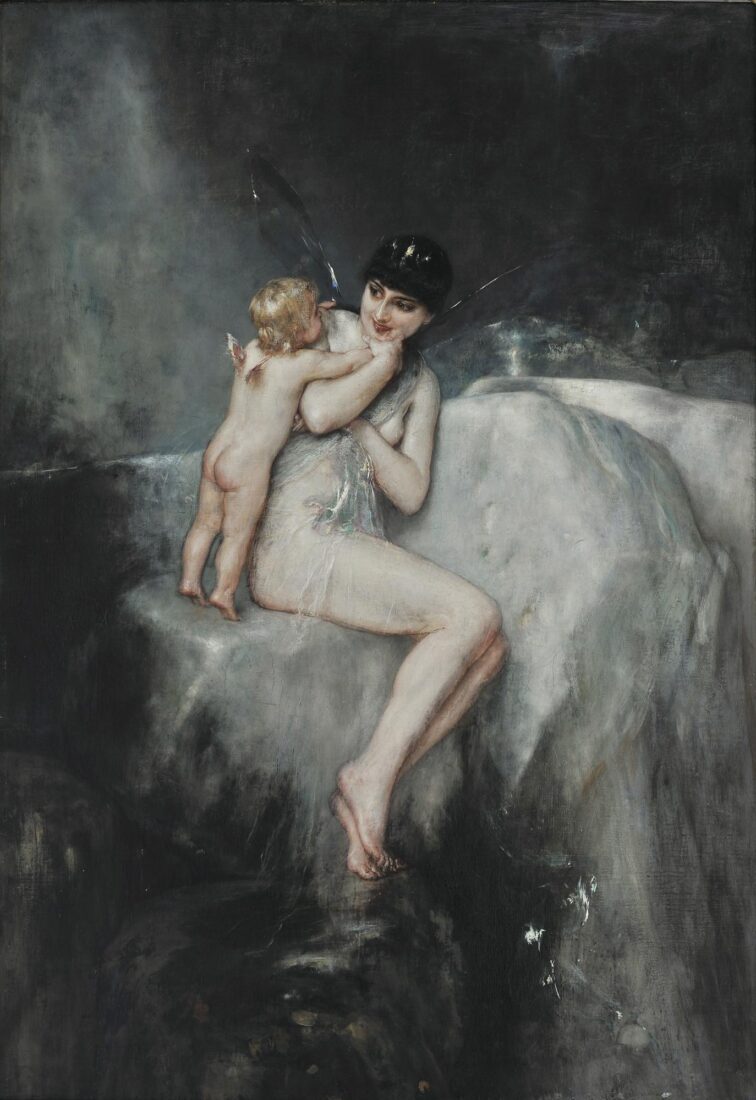
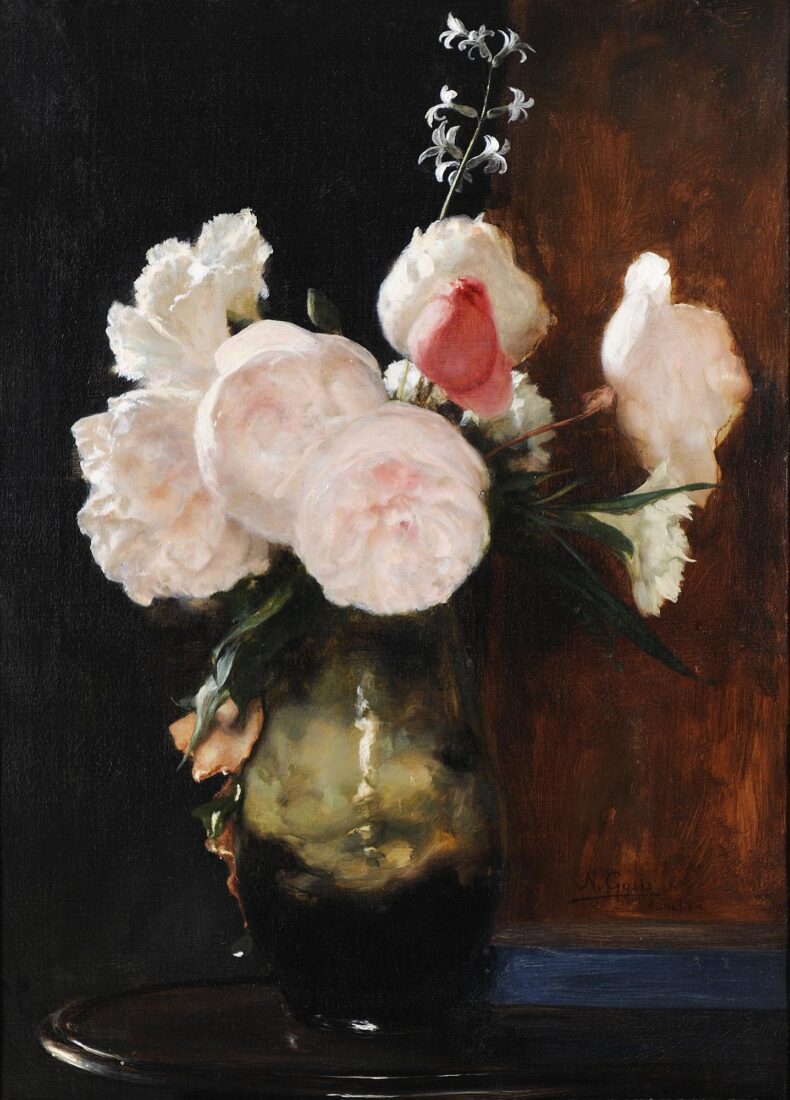
This transparent vase with peonies, roses, carnations and a fine-stemmed hyacinth has been painted by Gyzis with freedom and artistic sensitivity. The fine gradation of pink and above all the interplay of light, which makes some of the hyacinth flowers glow, have been captured with the utmost gentleness. The bright colours of the flowers project strongly against a dark brown background.
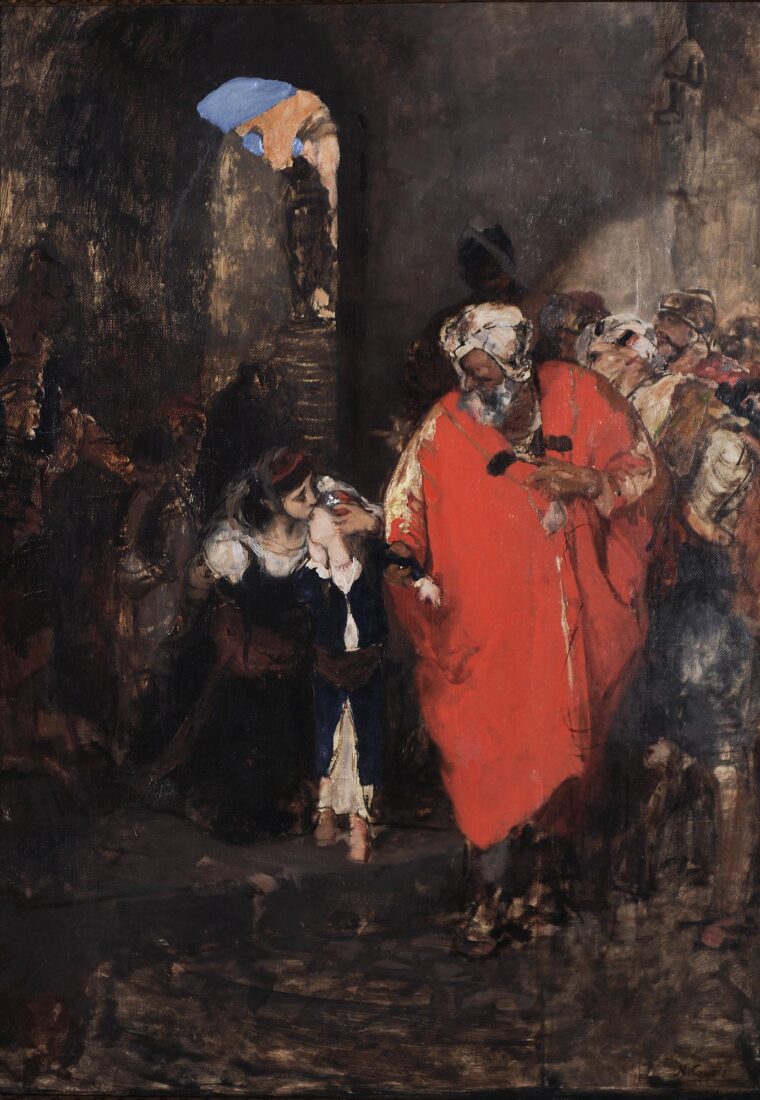
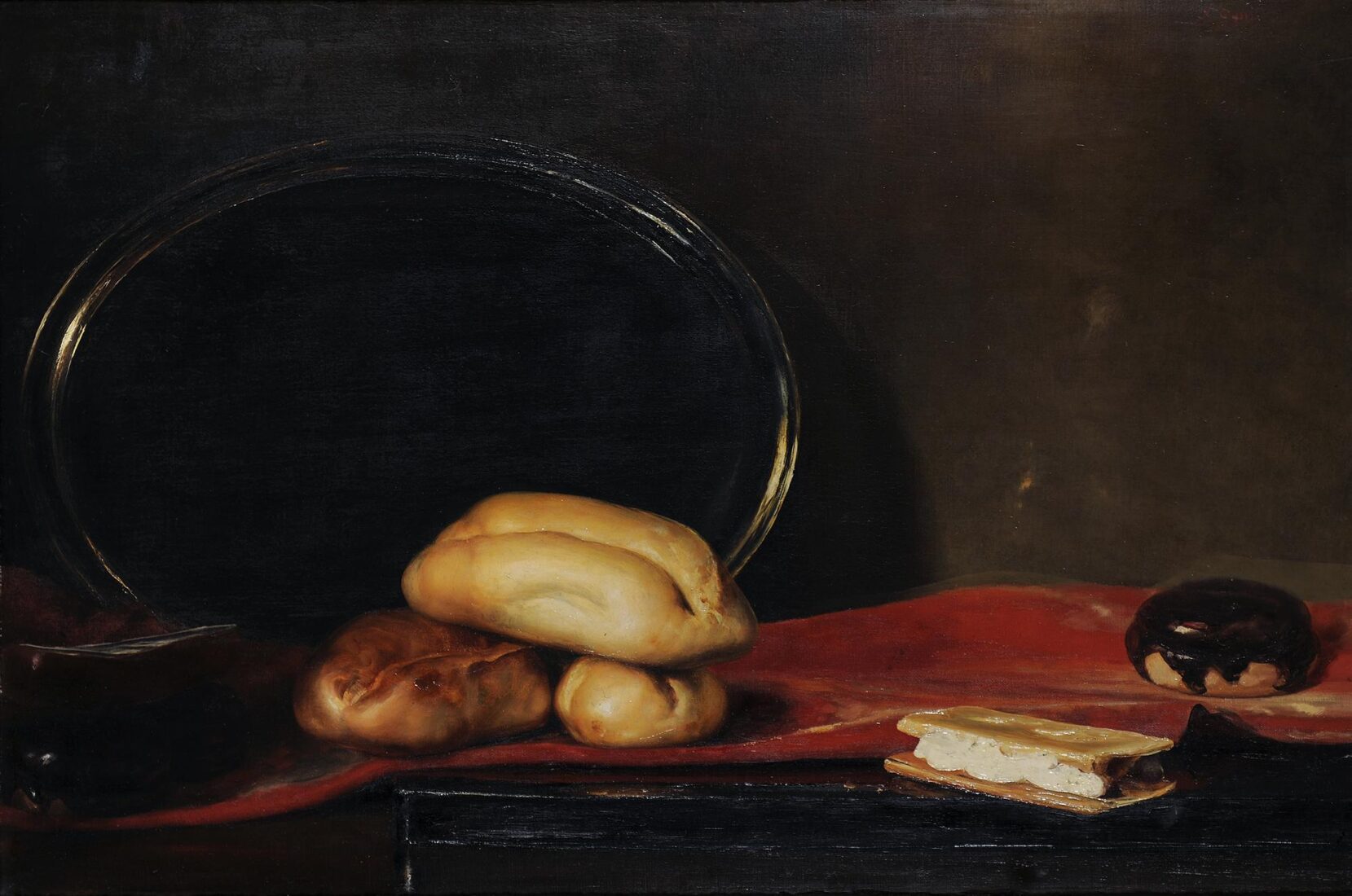
Towards the end of his life, Gyzis produced certain exquisite still lifes in a break from painting large subjects. In this still life, an oval silver plate reflecting a dark light, three well-baked bread loaves and two pieces of pastry are laid on a reddish tablecloth. An opportunity for the masterful artist to prove his hand in capturing textures and creating compositions of minimal colour, in which dark hues along with red colour and the gold colour of the bread prevail.
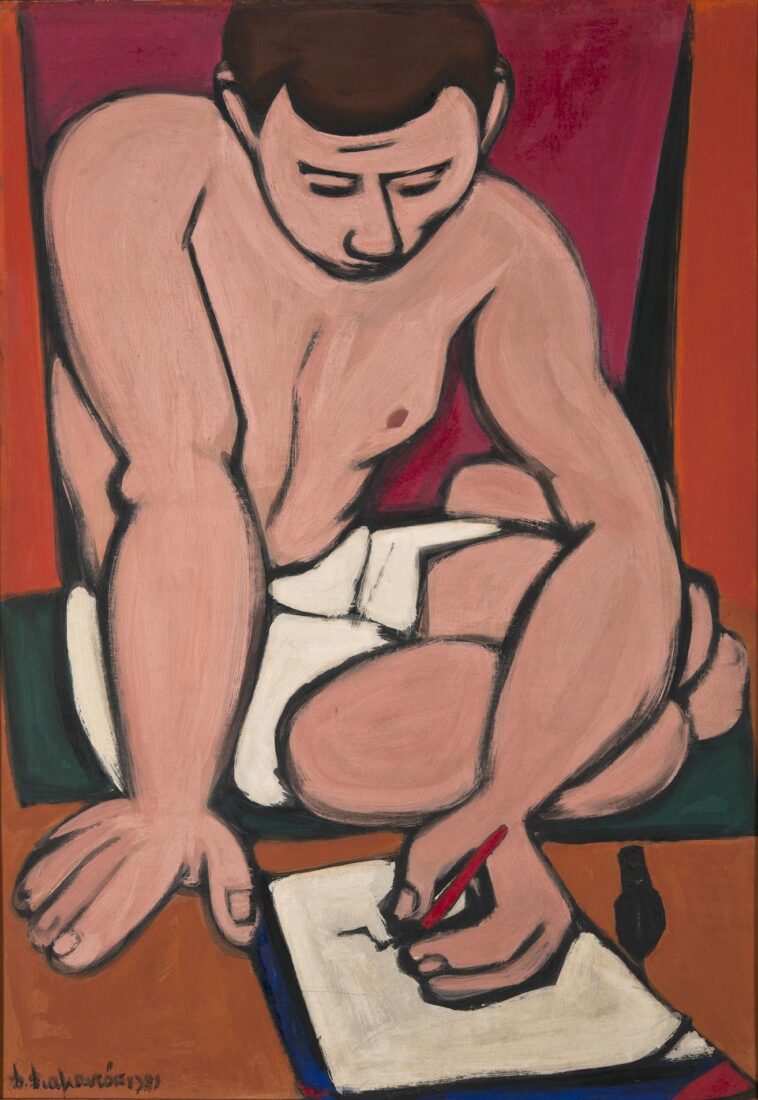
Born in the lost Greek homeland of Asia Minor, Diamantis Diamantopoulos matured and was artistically shaped during the 1930s. Like Yannis Tsarouchis, his early work combines the teachings of tradition, particularly those of folk art, with the visual principles of modernism. This depiction of a youth seated on the floor drawing is a typical manifestation of Diamantopoulos’ personal style. The strong, decisive drawing with its emphatic outlines recalls Matisse as well as Picasso. As opposed to Tsarouchis, Diamantopoulos puts particular stress on the volume of the body. Given that the color is flat as per the dictates of modern art, this volume is indicated solely through the drawing and the strong perspectival alliances. The pink flesh, the black, white, red, orange and the touches of complementary blue compose the unadorned chromatic symphony of this powerful work.
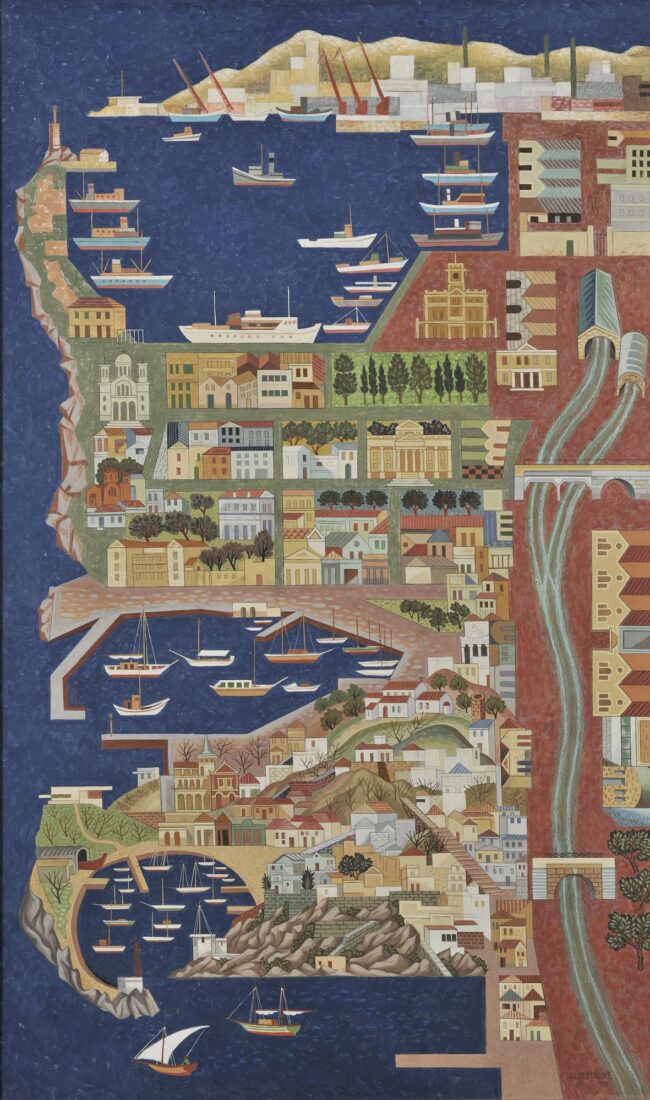
Aginor Asteriadis was a descendent of what is known as the Thirties Generation in Greek art. These particular artists espoused the ideological stand that the creation of an authentic Greek art form required a combination the lessons of tradition with the teachings of modern art. In the case of Asteriadis, tradition meant Byzantine art, which he’d studied as a hagiographer, as well as folk painting, on which he’d written several books.
His monumental composition, Piraeus, is highly typical of his practice and influenced by decorative folk art. The cartographical organization of the space does away with perspective and the third dimension. The subject is depicted vertically with the three harbors of Piraeus in ascending sequence from Mikrolimano and Zea to the main commercial port of Piraeus. All the compositional elements are stylized to the point that they become ornaments. The dark blue sea has a lively dialogue with the ochre tones of the earth, whereas the white houses add a joyful note to the composition, which is characterized by a strong melodic rhythm.
Similar compositions and chromatic arrangements are encountered in the Illustration of the Battle of Makrygianni by Panagiotis and Dimitrios Zografou.
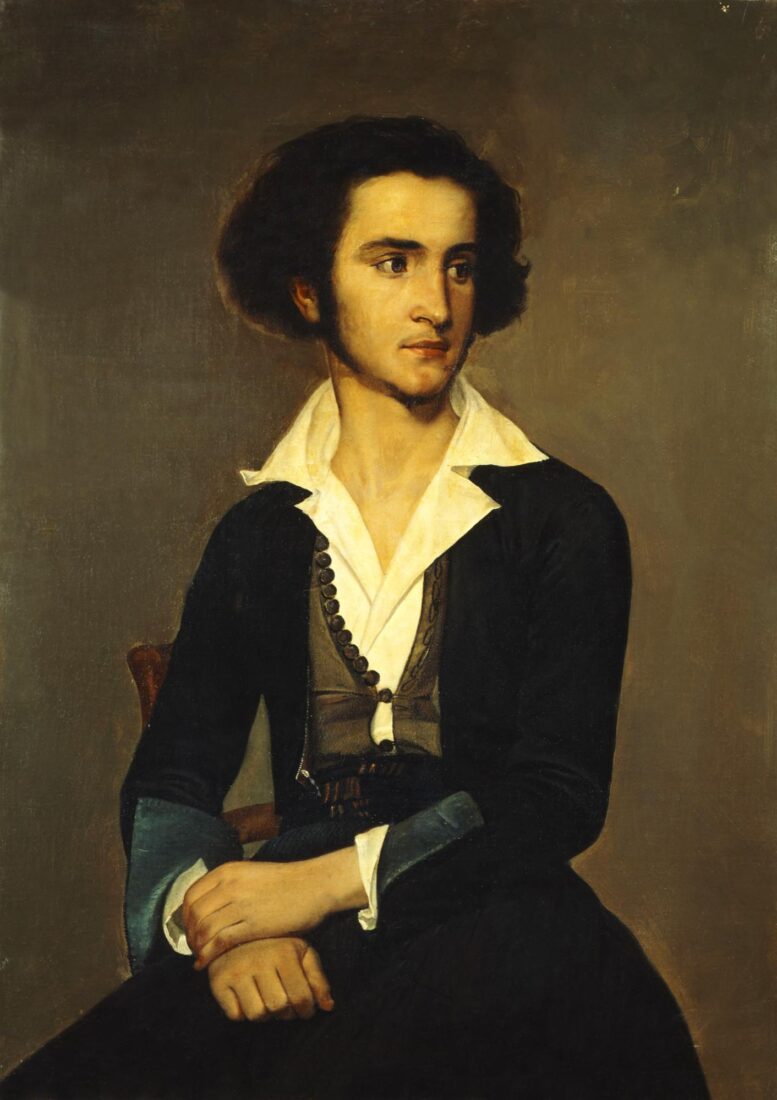
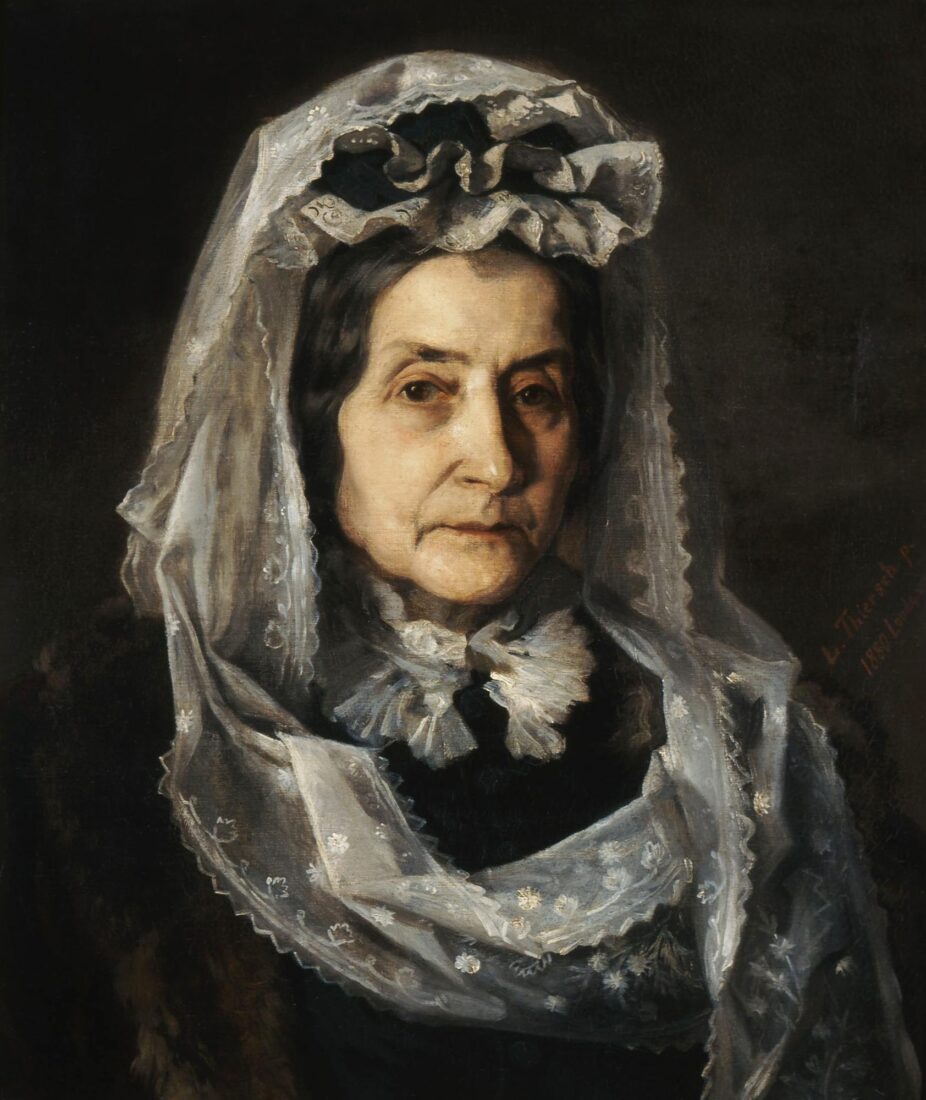
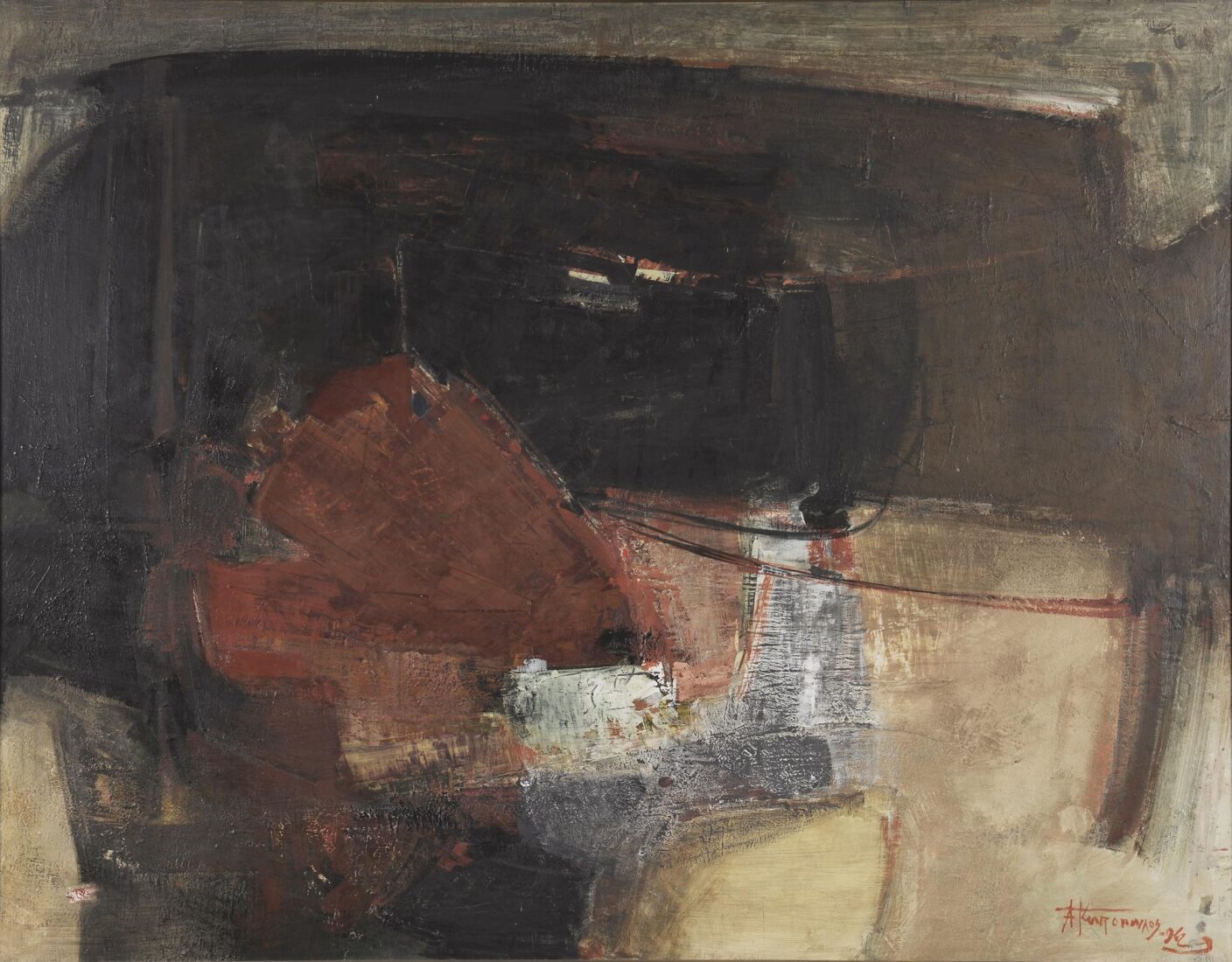
Alekos Kontopoulos was in the vanguard of abstract painting in Greece. By the early 1950s he’d begun organizing the still figurative elements of his compositions in a geometric fashion under the influence of Cubism and geometric abstraction. Characteristic of this first period is the juxtaposition of abstract and figurative elements in the same composition. In Composition-Image, the abstraction has been culminated. Two masses of color, one dark, the other red, clash on a ground covered in shades of ochre and sienna. Beams of light cross the space, while dynamic orbital brushstrokes introduce their own rhythm to this composition that recalls the French Informel, the trend of amorphous art that concurrently dominated the art scene in France, where Kontopoulos lived for many years.
